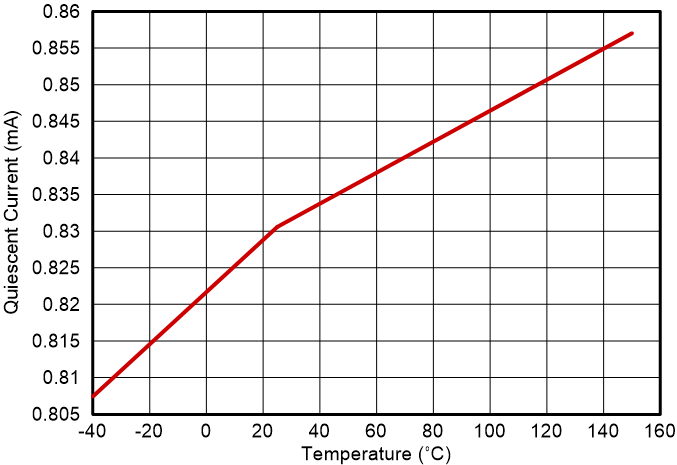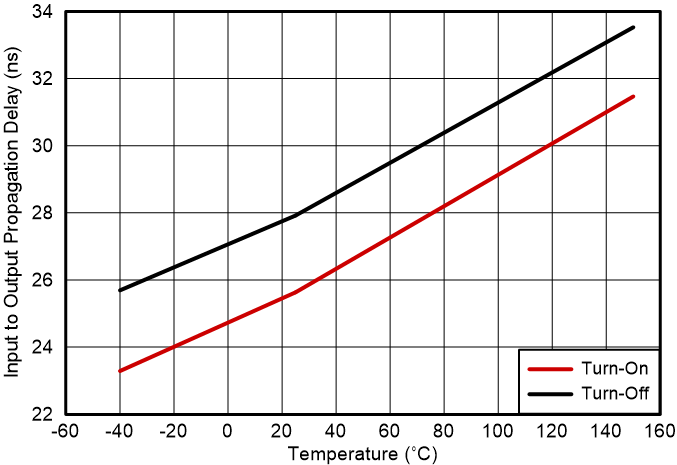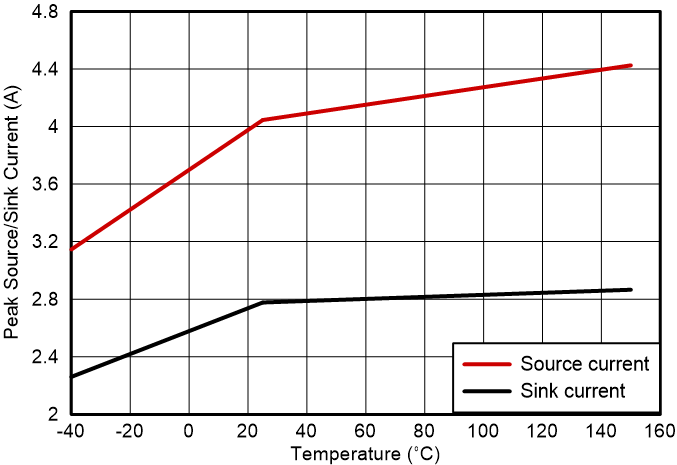SLUSFL3B June 2024 – October 2024 UCC57102 , UCC57108
PRODUCTION DATA
5.8 Typical Characteristics
Unless otherwise specified, VDD=15V, VEE=0V, IN=3.3V, EN=5V, TJ = 25 °C, No load

| VDD = 6.5V |

 Figure 5-9 UVLO Threshold
Figure 5-9 UVLO Threshold  Figure 5-11 Input Pulldown Resistance
Figure 5-11 Input Pulldown Resistance Figure 5-13 Enable Up Resistance
Figure 5-13 Enable Up Resistance Figure 5-15 Output Pulldown Resistance
Figure 5-15 Output Pulldown Resistance 
| CLOAD = 1.8 nF |

| CLOAD = 1.8 nF |

| CLOAD = 1.8 nF |
 Figure 5-23 Vref
Voltage vs VDD
Figure 5-23 Vref
Voltage vs VDD Figure 5-25 Soft
Turn Off Pulldown Resistance vs VDD
Figure 5-25 Soft
Turn Off Pulldown Resistance vs VDD Figure 5-27 DESAT Threshold vs Temperature
Figure 5-27 DESAT Threshold vs Temperature 
| IFLTb_sink = 15mA |


| CLOAD = 1.8 nF |
 Figure 5-10 Input Threshold
Figure 5-10 Input Threshold  Figure 5-12 Enable Threshold
Figure 5-12 Enable Threshold  Figure 5-14 Output Pullup Resistance vs VDD
Figure 5-14 Output Pullup Resistance vs VDD
| CLOAD = 1.8 nF |

| CLOAD = 1.8 nF |

| CLOAD = 1.8 nF |

| CLOAD = 1.8 nF |
 Figure 5-24 Vref Voltage vs
Temperature
Figure 5-24 Vref Voltage vs
Temperature Figure 5-26 DESAT Charge Current
vs Temperature
Figure 5-26 DESAT Charge Current
vs Temperature
| CLOAD = 100 nF |